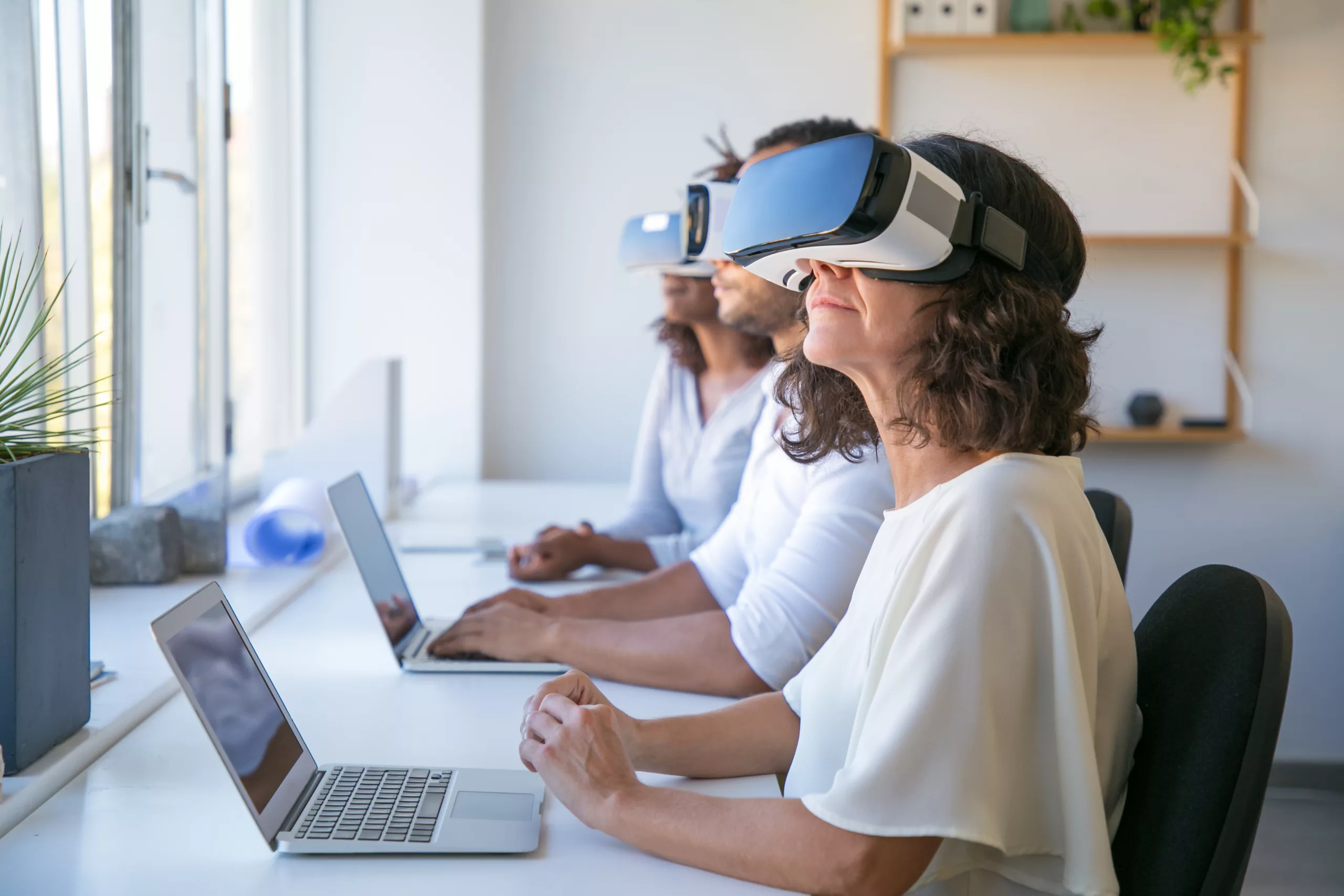Virtual reality (VR) and augmented reality (AR) technologies have become real breakthroughs in the field of education. VR immerses users in a virtual, 3D world. It lets users learn and simulate various activities in a safe environment. AR is meant to enhance the physical world and content. It complements reality with virtual elements to boost the outcomes of learning.
In recent years, these technologies have been advancing rapidly. Already now, they are helping teachers educate, engage, and motivate students across all academic levels. Already now, both VR and AR have shown the potential to make learning more practical, efficient, and accessible. And they’ve also shown the potential to offer benefits that resonate with students with special needs. Read on to learn more about the major advantages of these technologies and how they support students with disabilities!

Boosting Engagement
Needless to say, standardized education isn’t very fun. The traditional academic program consists of hours of reading, homework, and academic writing. All these activities are time-consuming and boring. So they often make students seek someone to ask “Please, do my paper for me” instead of doing the boring tasks themselves. However, VR and AR have changed the game. Research confirms that these technologies boost learners’ engagement by making classroom experiences fun. And this also benefits students with disabilities.
Experts confirm that there is a direct link between engagement and disability. According to studies, learners with special needs often find it hard to get engaged in the classroom. That’s because their engagement is multi-faceted and multi-dimensional. Thus, incorporating AR and VR can help make them more involved in the process of education.
Facilitating Social Interaction
The next benefit is especially felt in autistic students. Specialists have been using VR and AR to support learners with Autism Spectrum Disorder (ASD) starting from the 1990s. Since that time, many studies and experiments have been conducted. They confirmed that young people with ASD respond to virtual scenarios in a meaningful way.

Moreover, these technologies have been proven to support social interactions in people with ASD. According to studies, the use of VR and AR helps promote emotional and social skills. Thus, helps ASD learners overcome their impairments in communication and social interaction.
It also provides benefits for students with other disabilities, like hearing problems. By augmenting reality with real-time text prompts, we can help such learners communicate with their teachers and peers without a hassle.
Facilitating Inclusivity in the Classroom
The next big benefit of VR and AR is inclusivity. Both technologies allow educators to create meaningful and equal experiences for everyone. By enhancing or replacing physical reality with digital one, we gain access to a variety of tools. These tools can provide disabled students with everything they need to participate in activities. This includes activities they were previously excluded from because of certain limitations.
There are many examples. Namely, VR and AR enable learners with restricted mobility to go on field trips to famous sites and museums. They can even visit other planets. Young people with hearing problems can see transcripts of the text in real-time to keep up with the rest of the class. Such opportunities promote inclusivity in the classroom. They allow disabled learners to do the same things that their peers do.
Developing Motor Skills and Spatial Awareness
Different disabilities pose a variety of restrictions on young people. Often, because of them, learners can’t engage in activities that involve spatial awareness and motor skills. And not developing these abilities along with their peers can hold such students back from success in school and life in general. So this is one more way how technology can help.
As you already know, both VR and AR have the possibility to alleviate various physical restrictions. It provides an environment where everything’s possible.
A blend of different realities can help build spatial awareness and motor skills in all learners. In some cases, it can let disabled learners experience movement and engage in certain activities that they can never experience in the physical world.
Improving Language-Related Skills
This might not be the most common application of VR and AR in education, but it might be one of the most important ones. There is no secret that writing plays a significant role in the learning process. Due to this reason, students of all ages are assigned plenty of essays and academic papers throughout their education. We have to admit that different writing tasks are hard by default. Many young people have to use professional essay editing services to cope with their papers and ensure high grades. But learners with language-related disabilities struggle with such tasks even more.
There are many conditions that complicate the processing and interpretation of information. These include:
- Language deficiencies;
- Dyslexia;
- Down syndrome;
- Cognitive deficits, etc.
These conditions make it hard to build vocabulary and express own ideas in written form. However, experiments showed that AR and VR can help such students too. Namely, educators in India have tried to teach disabled students using interactive textbooks. The textbook uses 3D images, videos, and audio clips to explain the academic materials. Such a gamification approach helped disabled learners comprehend the material better. It also helped them improve retention, build vocabulary, and even enhance their writing skills.
The Bottom Line
VR and AR have been around for quite a while and have long found practical applications in the educational sector. These technologies have already been proven to offer plenty of tangible benefits to learners. They boost engagement and make learning more interactive and fun. Also, they provide students with unique academic experiences and help develop a variety of skills hands-on.
As you now know, these technologies also have a plethora of advantages for students with special needs. They can help them receive equal experiences as their peers and tackle a variety of challenges they face on a daily basis. Moreover, experts believe that there might be even more benefits hidden in it. So we can’t wait to see what else they can offer us!










